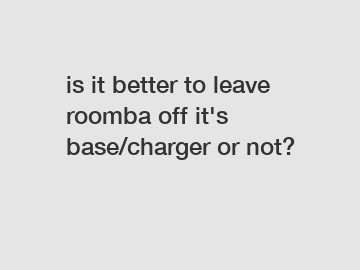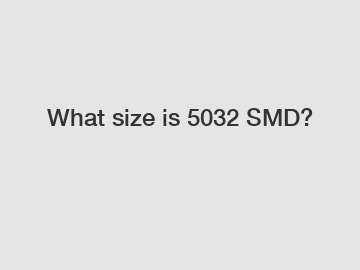A Brief History of the Barcode
A Brief History of the Barcode
The barcode has also had an impact on other areas of society, such as healthcare. Barcodes are often used to identify patients, medications, and medical equipment, which can help reduce errors and improve patient safety. They are also used in libraries to track books and other materials, and in manufacturing to track the production process.
Are you interested in learning more about Barcode Scanner Wired? Contact us today to secure an expert consultation!
Barcodes are increasingly being used to make a digital link between objects and information. A QR code on a restaurant table leads to a menu and online ordering system, or on a product pack, to an online video showing the product benefits. Soon the GS1 standard for retail marking will grow to include 2D codes with the GS1 Sunrise 2027 initiative.
History of Barcode Scanners
A Short History of Barcode Scanners
The history of barcode scanners and their development owe their existence to the grocery business.
As the corner grocery store grew and started stocking more and more products to keep its customer’s happy, the ability to understand just what was on the shelf and to re-order items sold became more and more critical to the financial success of the all grocery businesses. Before the development of the barcode scanner, the only way to get an accurate inventory of stock on the shelves and in the back room was to do a manual count of each and every item in the store. Time consuming and expensive to complete, instead of manual inventories, most store managers based their ordering decisions on crude estimates and arbitrary feelings. Most inventories were done infrequently, on average of once per month.
Supermarket management personnel realized they were in a competitive marketplace, and that shopper’s patronage relied on having the products they desired on-hand – all the time. Some owners considered using the punch-card technology that was developed in the late 19th century to complete the US Census. The vision was that the customer would punch the cards to mark their selections, the cards would be put in a reader at check-out, and a sales tally by product would be kept for the re-ordering process. But the consumer market was moving towards more convenience and time savings, and the proposal wasn’t even prototyped.
The Modern Barcode
We can trace the idea of the modern barcode to around 1948, when a graduate student at the Drexel Institute in Philadelphia heard a conversation between one of the faculty and an executive of a food store chain. The executive was trying to convince the faculty member to have the school develop a system to quickly and accurately capture product data at the check-out counter. The student, Bernie Silver related the conversation to Norman “Joe” Woodland, a teacher at the institute. The problem intrigued Woodland, and for the next 2 years he would experiment with a variety of data collection techniques to find the one that worked.
Woodland “invented” the first barcode, basically by using Morse code – a series of dots and dashes used in telegraph and radio communications. Woodland wrote out the dots and dash representation of the product number and extended the lines of each vertically creating the first linear barcode. To read the barcode, Woodland adapted the DeForest movie sound system from 20 years earlier that used a sensitive tube to detect the projector light shining through the side of the film. In the movie industry, the light detected would be converted into sound. In Woodland and Silver’s adaptation, the reflected light would be converted to numbers.
In order to make the code readable from any direction, Woodland converted the lines into a circle – appearing like an archery target. Today, this type of code is known as the “bulls-eye” code. Convinced of the viability of their ideas, Silver and Woodland applied to patent the idea in late 1949. Taking a job at IBM, Woodland built a prototype reader in his house using the technology of the day which included a high wattage incandescent bulb. As big as a large trunk, it demonstrated that the technology could work. The problem was converting the output into something meaningful for a store’s manager or customers. Woodland approached his bosses at IBM to develop the technology, who offered to buy the patent that was granted in 1952, but Woodland and Silver held out to get a price that more closely reflected the potential of the technology. In the early 1960’s they sold the patent to Philco, who eventually sold it to RCA.
Collecting Product Data
Meanwhile, various inventors proposed other methods of collecting product data during the late 1950’s and through the 1960’s. Of note is a railway car tracking system developed by David Collins of the Sylvania Corporation. The system used a series of colored stripes made of reflective materials that represented a 10-digit number. A Sylvania computer interpreted and displayed the data to the operators. As the car entered the yard, colored lights would shine on the label, with a light sensor “decoding” the results. The system was first tested in 1961, and was available for purchase in the early 1970’s, but the equipment was costly and cumbersome. Strapped for cash with the proliferation of the automobile, the industry underwent a shake-up in the recession of 74-76, and the system died when the interstate truck replaced the supremacy of the train as the major freight mover in the country. Reading the writing on the wall, Collins left Sylvania and founded Computer Identics.
If you want to learn more, please visit our website Inventory Scanners Handheld.
See also:7 Ways USB Scan Engine Outperforms Traditional Security Systems
Revolutionizing Access Control: All You Need to Know About Hand Scanner Terminals
Top Retail Handheld Scanners: A Buyer's Guide
Ultimate Guide: Passport Scanner FAQs & Solutions
Exploring the Benefits of Hand Held Bar Code Readers
1d vs 2d Barcode Scanner: Which is Right for You?
Unlock Efficiency with the Wavecreating Wired Barcode Scanner
Collins continued his work with Automatic Identification technology at Compunetics. Switching to a black and white barcode, the real innovation of his system was the use of a laser beam as a light source. The laser light was smaller, cooler and could be moved back and forth rapidly over the code, giving rise to the terms “barcode scanner” (because the laser would pass over the code many times per second) and “laser line” (the optical illusion of the laser scanning over the barcode). In the late 1960’s, Computer Identics installed two of these systems – one in a General Motors plant and the other in the General Trading Company’s distribution center in New Jersey. The barcodes held only 2 digits of data – but that was enough to allow pertinent information to be gathered.
With the technological progress of the late 60’s to early 70’s, transistors and laser components were getting less expensive, and computer processors continued to shrink in size. Remember the Silver-Woodland patent purchased eventually by RCA? By attending a industry conference in 1966, executives at that company became convinced that using barcode scanners at check-out was an emerging and lucrative market. They developed a bullseye symbol and a scanner that was installed and operating in a Cincinnati Kroger store beginning in 1972. Although the system generated valuable Return-on-Investment data, printing problems with the bulls-eye barcodes and scanning problems limited its usefulness.
Back in the grocery business, a consortium of food chains tasked Logicon, Inc to make recommendations for the proposal for an industry-wide barcode system and symbology. By 1969 the Ad Hoc Committee on a Uniform Grocery Product Code was formed, chaired by the President of H.J. Heinz Company, and including members from General Foods, Kroger, A & P, Proctor & Gamble, among others. The Ad Hoc Committee refined competing proposals from technology companies bidding on developing the technology. These companies included RCA, IBM, Singer, Litton and Pitney-Bowes.
IBM won the proposal in 1973, using a barcode developed by George Laurer. The code was (and is) split into halves of six digits each. The first digit is always zero, the next 5 digits represent the manufacturer of the product, digits 7 through 11 is the product number or SKU, and the last digit is a check digit for validation that the code was read correctly. The code can be scanned in either direction, and didn’t have the problems with printing that the RCA bulls-eye code had. The vertical orientation of the code allowed printers to void the excess ink at the bottom of the code, making the top of the code perfectly readable. Joe Woodland, the originator of the patent more than 20 years earlier would play an important role with the IBM team developing the technology that won the bid. He was presented with the 1992 National Medal of Technology for his work by President George Bush.
On June 26th, 1974, and a 10-pack of Wrigley’s chewing gum was the first product logged in a grocery store by a barcoding system using the modern UPC code. Later that year, the Uniform Grocery Product Code Council became the UPCC (Uniform Product Code), which regulates the issue and use of all Universal Product Codes.
At the same time, companies pursued the use of barcodes in industrial and other applications. In 1971 the Plessey Company developed a barcode scanner and tracking system for library book checkout. The Codabar barcode was developed by Monarch Marking Systems around the same time for blood collection and book tracking applications. Intermec developed Code 3 of 9, a barcode that could store alpha-numeric information. All other codes prior to this could only represent numeric digits.
Throughout the 1970’s barcode scanning systems became more affordable and practical with the continued price reduction and miniaturization of microprocessors and lasers. Many companies developed their own barcode scanner equipment and barcode symbology, and there were no commonly recongnized standards for barcodes outside the grocery industry. The UPC system pointed to the ability to standarize labor savings and data accuracy on a massive scale, if standards for barcoding were followed. In that decade, a series of Department of Defense MilSpec’s and ANSI standards unified the coding conventions for Code 3 of 9, I2of5 and Codabar.
Because the ROI of barcode scanner systems were so profound, a new and standarized insustry was born. Barcode standarization is one of the most profound events in the history of logistics. With a barcode and a reliable barcode scanner, data entry errors are virtually eliminated. Storing and referencing the collected data with the use of a computerized database have revolutionized the way we think about gathering and reporting data.
We’ve come a long way from the days of the manual inventory, the price sticker that the cashier would ring up, and making ordering decisions based on hunches.
Contact us to discuss your requirements of Barcode Scanner for Resellers. Our experienced sales team can help you identify the options that best suit your needs.
How Barcode Scanning Engine Elevates Customer Experience?
What are the different types of scan engines?
How Does 360 Degree Lifting Rotating PC Service Work?
How to Choose a 2
10 Questions You Should Know About Video Wall Lighting Techniques
How to Choose the Right Video Wall Acoustic Management System?
LED vs LCD: Frequently Asked Questions about Video Walls




